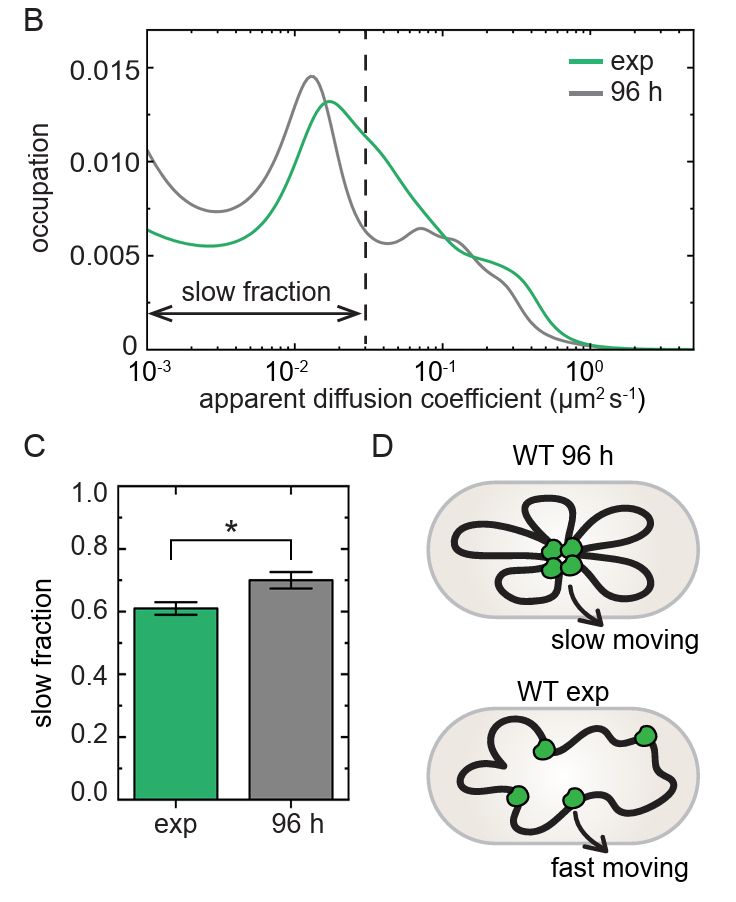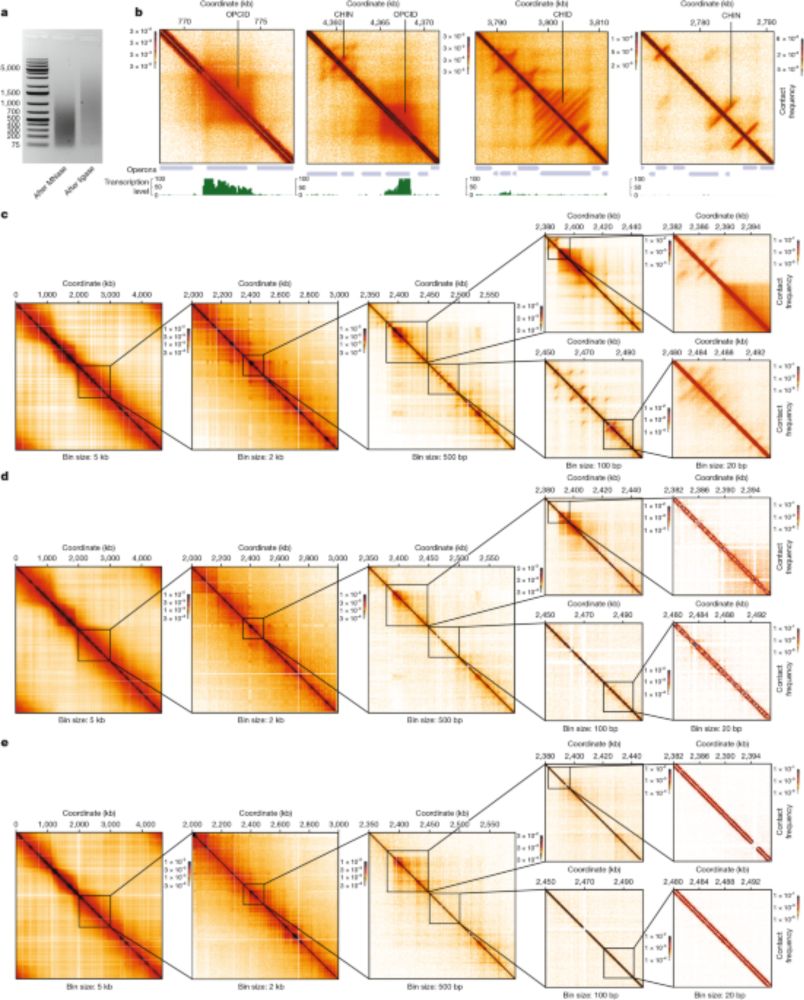
Elio Abbondanzieri
@abbondanzieri.bsky.social
Dad, Husband, Biophysicist, Tinkerer
It is an important reminder that cells aren't just bags of chemicals reacting with each other, they are complex tiny physical machines with intricate internal architectures that dictate what they do. Thanks for reading this far!

October 22, 2025 at 7:21 PM
It is an important reminder that cells aren't just bags of chemicals reacting with each other, they are complex tiny physical machines with intricate internal architectures that dictate what they do. Thanks for reading this far!
So taking our data all together, we see that to understand what H-NS is doing, we can't just ask if it is present and if it is bound to the DNA. We have to go deeper look at the structure the H-NS creates in the genome.

October 22, 2025 at 7:21 PM
So taking our data all together, we see that to understand what H-NS is doing, we can't just ask if it is present and if it is bound to the DNA. We have to go deeper look at the structure the H-NS creates in the genome.
When we asked what parts of the genome are being downregulated or upregulated, we see that downregulated genes correlated with H-NS binding and the Hi-C peaks. By contrast, upregulated genes are weakly anti-correlated with these things.

October 22, 2025 at 7:21 PM
When we asked what parts of the genome are being downregulated or upregulated, we see that downregulated genes correlated with H-NS binding and the Hi-C peaks. By contrast, upregulated genes are weakly anti-correlated with these things.
We also performed RNAseq, a technique that lets us monitor gene expression across the cell. The ability of H-NS to repress gene expression was much stronger during stationary phase. Surprisingly, H-NS was able to broadly upregulate numerous genes during stationary phase.

October 22, 2025 at 7:21 PM
We also performed RNAseq, a technique that lets us monitor gene expression across the cell. The ability of H-NS to repress gene expression was much stronger during stationary phase. Surprisingly, H-NS was able to broadly upregulate numerous genes during stationary phase.
The Biteen lab also showed H-NS was excluding large protein assemblies from accessing the middle of the cell during stationary phase. So H-NS was forming a stable structure in the cell that affected how objects diffuse around the cytoplasm.

October 22, 2025 at 7:21 PM
The Biteen lab also showed H-NS was excluding large protein assemblies from accessing the middle of the cell during stationary phase. So H-NS was forming a stable structure in the cell that affected how objects diffuse around the cytoplasm.
We wanted to know what this meant, and we turned to Lauren McCarthy from the @juliebiteenlab.bsky.social lab to do single molecule analysis inside of the cells. Lauren McCarthy was able to demonstrate with other students that H-NS was anchored down more strongly in stationary phase.

October 22, 2025 at 7:21 PM
We wanted to know what this meant, and we turned to Lauren McCarthy from the @juliebiteenlab.bsky.social lab to do single molecule analysis inside of the cells. Lauren McCarthy was able to demonstrate with other students that H-NS was anchored down more strongly in stationary phase.
So H-NS is bridging different parts of the genome together! This had been observed previously in vitro, but for a long time there was no evidence of it happening in vivo. Our work complements another paper focused on short distance H-NS bridging in exponential phase, which just came out in August.

Elementary 3D organization of active and silenced E. coli genome - Nature
An ultra-high-resolution chromatin organization map of E. coli, using Micro-C, reveals intricate chromatin structures involved in the silencing of horizontally transferred genes and those associated w...
www.nature.com
October 22, 2025 at 7:21 PM
So H-NS is bridging different parts of the genome together! This had been observed previously in vitro, but for a long time there was no evidence of it happening in vivo. Our work complements another paper focused on short distance H-NS bridging in exponential phase, which just came out in August.
And the parts of the genome that were packed into this core? We can identify that by integrating the peaks in the Hi-C contact maps. It turned out to be almost identical where on the genome H-NS was bound detected by ChIP-seq.

October 22, 2025 at 7:21 PM
And the parts of the genome that were packed into this core? We can identify that by integrating the peaks in the Hi-C contact maps. It turned out to be almost identical where on the genome H-NS was bound detected by ChIP-seq.
We saw a characteristic pattern that was consistent with a few disparate regions of the DNA around the genome were "pinched" together during stationary phase into a dense core. This dense core only formed if H-NS was present and the cell was in stationary phase.

October 22, 2025 at 7:21 PM
We saw a characteristic pattern that was consistent with a few disparate regions of the DNA around the genome were "pinched" together during stationary phase into a dense core. This dense core only formed if H-NS was present and the cell was in stationary phase.
Importantly, she was able to adapt the technique to work in stationary phase, which has been a barrier for most labs. The raw data was challenging to visualize at first, but we were able to use algorithms designed for image analysis to isolate the long-range interactions.

October 22, 2025 at 7:21 PM
Importantly, she was able to adapt the technique to work in stationary phase, which has been a barrier for most labs. The raw data was challenging to visualize at first, but we were able to use algorithms designed for image analysis to isolate the long-range interactions.

